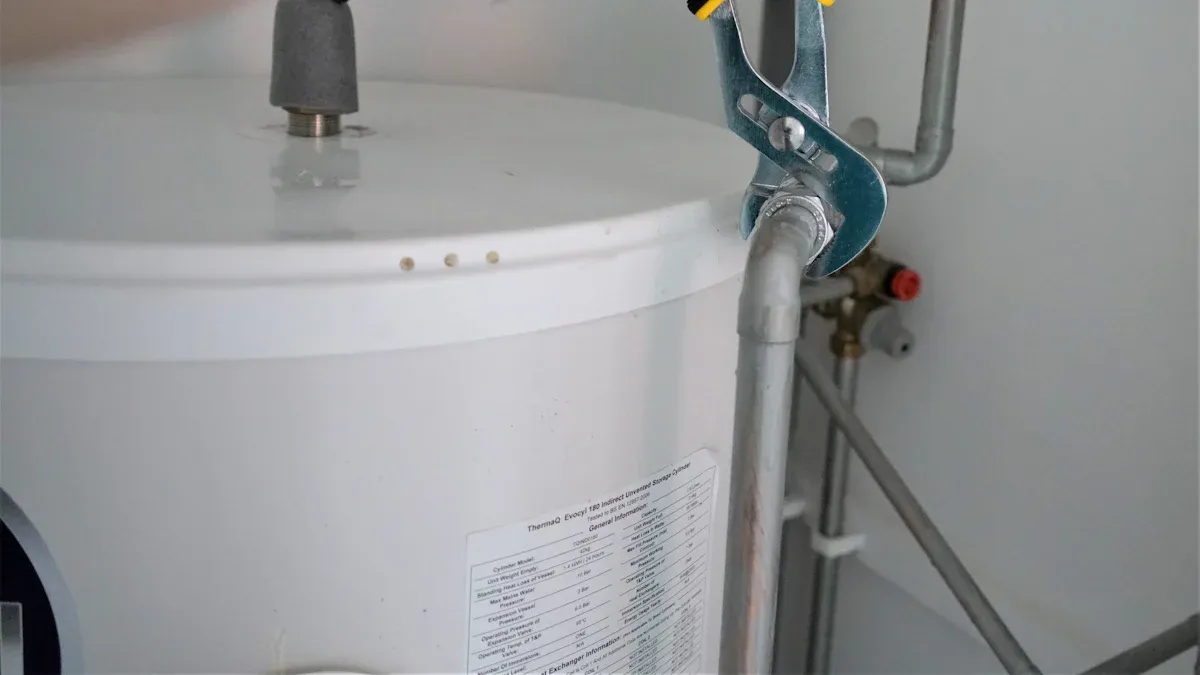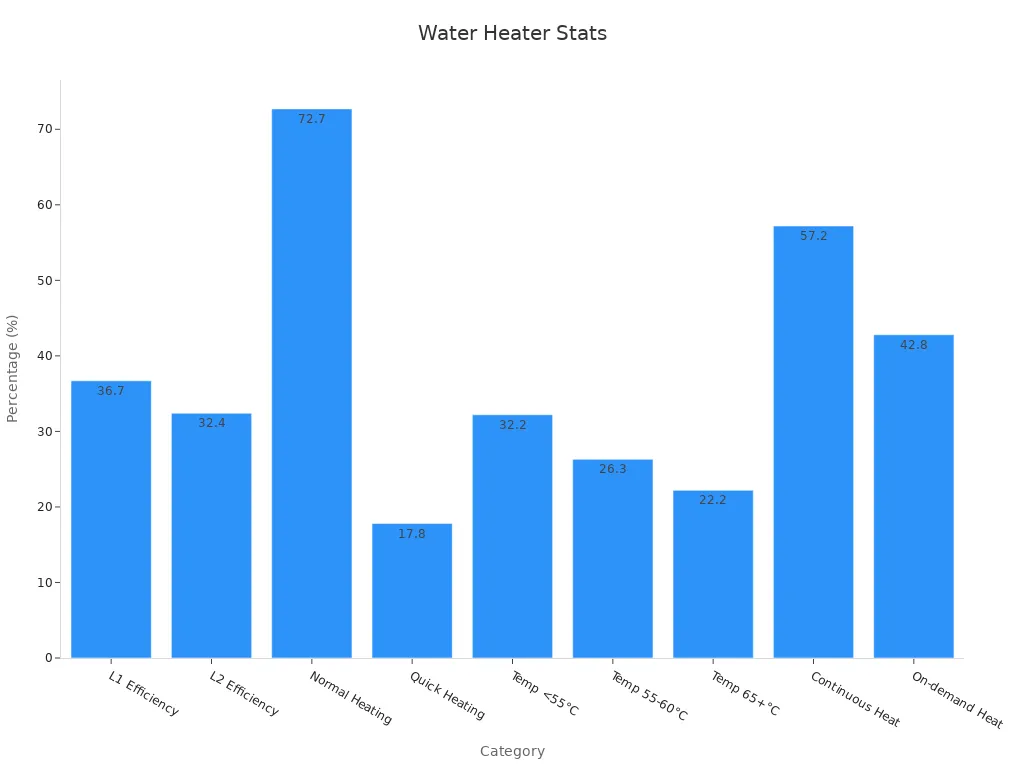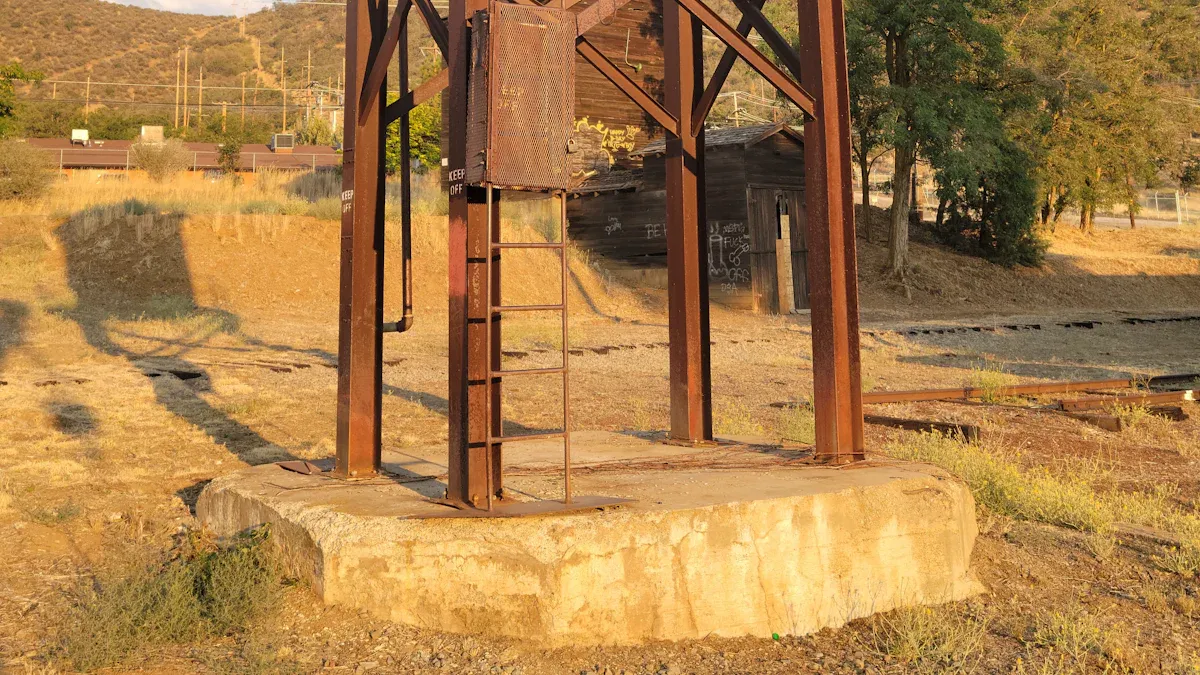
Choosing the right water heater element is crucial for every home or business. Many people opt for energy-efficient models, with 36.7% selecting Level 1 and 32.4% choosing Level 2. Upgrading your water heater heating element can reduce energy consumption by 11–14%.

| Statistic Description | Numerical Value / Percentage |
|---|---|
| Percentage choosing Level 1 energy-efficient heaters | 36.7% |
| Percentage choosing Level 2 energy-efficient heaters | 32.4% |
| Energy saved by increasing efficiency rating by one level | 11–14% reduction |
Selecting the right immersion water heater or heating element for water heater not only improves performance but also enhances safety and energy savings. Whether you need a replacement water heater element or an upgrade, choosing the proper heating element for water heater is key to efficient operation.
Key Takeaways
- Choose a water heater element based on your specific needs like heater type, power, and water quality to save energy and improve safety.
- Pick materials and watt density that match your water conditions to extend the element’s life and avoid damage.
- Always check safety certifications, local codes, and warranties to protect your home and ensure reliable performance.
Understanding Your Water Heater Element NeedsIdentifying Application and Market Requirements
Every market has unique needs when it comes to hot water. People in homes, businesses, and factories all use water differently. The right Water Heater Element depends on how much hot water people need, what type of heater they use, and what rules or trends shape their choices.
Here’s a quick look at how different factors affect the requirements for water heater elements:
| Aspect | Details | Impact on Water Heater Element Requirements |
|---|---|---|
| Product Types | Storage-type, Tankless, Hybrid | Each type needs different element designs and efficiencies |
| End-Use Industries | Residential, Commercial, Industrial | Hot water demand and conditions change by industry |
| Market Drivers | Energy efficiency, smart features, sustainability | Push for advanced, efficient, and durable elements |
| Regional Trends | North America, Europe, Asia-Pacific | Local energy sources and rules affect technology choices |
| Challenges | High costs, complex rules, technician shortages | Influence adoption and design of heating elements |
| Opportunities | Urban growth, green building, new infrastructure | Encourage innovation and renewable energy integration |
People in residential areas often want simple, reliable heaters. Commercial and industrial users need elements that handle bigger loads and tougher conditions. Energy efficiency and smart features are becoming more important everywhere.
Assessing Temperature, Capacity, and Environmental Factors
Temperature, tank size, and the environment all play a big role in choosing the right element. For example, a small home may only need a heater with a 30-liter tank, while a factory might need one over 400 liters. The type of water and how it flows also matter. Flowing water needs elements with more surface area to keep up performance.
Tip: Always check the water quality and temperature needs before picking an element. Corrosion resistance is key, especially if the water has chemicals or the heater sits in a humid place.
- Sheath materials like stainless steel, brass, or copper help prevent rust and damage.
- High watt density can cause overheating, so it’s important to balance power and safety.
- Placing temperature sensors in the right spot helps avoid overheating.
- Moisture can cause heater elements to fail, especially if they sit unused for long periods. Sealing terminal housings and using moisture barriers can help.
By understanding these factors, people can choose a Water Heater Element that lasts longer, works better, and keeps everyone safe.
Water Heater Element Types and Selection Criteria

Main Types: Immersion, Flange, Screw-in, and Specialty Elements
People can find several main types of water heater elements on the market. Each type fits different systems and needs. Here are the most common ones:
- Immersion Elements: These go directly into the water and heat it from the inside. Many storage water heaters use this type because it is simple and effective.
- Flange Elements: These attach to the tank with a flange plate. They work well in larger tanks and industrial settings.
- Screw-in Elements: These screw into a threaded opening in the tank. Most modern electric water heaters use this type because it is easy to replace.
- Specialty Elements: Some heaters need unique shapes or features, like low-profile or extra-long elements for special tanks.
Note: Storage water heaters hold the largest market share worldwide. They are popular because they can serve many systems at once and cost less than other types. Hybrid heat pump water heaters are growing fast because they save more energy.
Power, Voltage, and Watt Density Considerations
Choosing the right power and voltage for a Water Heater Element is important. If the power is too high, the element can overheat. If it is too low, the water may not get hot enough. Watt density also matters. It shows how much power the element puts out for each square inch of surface.
| Heating Element Type | Surface Temperature | Lifespan | Best For |
|---|---|---|---|
| Low-Watt Density | Lower | Longer | Hard water, longevity |
| High-Watt Density | Higher | Shorter | Fast heating, soft water |
Low-watt density elements spread heat over a larger area. This keeps the surface cooler and helps the element last longer, especially in hard water. High-watt density elements heat water faster but can build up scale and wear out sooner.
Selecting the correct wattage and voltage helps avoid overheating or damage. Electric water heaters lose less energy than gas models because they turn almost all the electricity into heat inside the tank. Thermostats help by turning the element on only when needed, which saves energy and keeps the system safe.
For industrial water heaters, the best watt density is usually low—about 5 to 30 watts per square inch. This keeps the element safe and helps it last longer. More viscous liquids need even lower watt densities to prevent overheating.
Material Compatibility and Corrosion Resistance
The material of a Water Heater Element affects how long it lasts and how well it works. Stainless steel, copper, and brass are common choices. Stainless steel resists rust and works well in harsh water. Copper heats up quickly and costs less, but it can corrode in some water types. Brass is strong and resists corrosion, making it good for tough jobs.
Tip: Always check the water quality before choosing an element. Hard or chemically treated water can cause corrosion or scale buildup. Picking the right material helps prevent these problems and keeps the heater running longer.
Safety Features, Certifications, and Local Codes
Safety comes first when picking a water heater element. Certified elements meet strict safety standards. For example, a recall in 1978 showed that uncertified immersion heaters could cause deadly electric shocks. The National Fire Protection Association reports that water heaters cause about 5,400 home fires each year in the U.S., leading to around 20 deaths. Certified elements help prevent these risks.
Local building codes also matter. They require features like proper venting, temperature controls, and safe installation. Codes often set minimum clearances and limit water temperature to prevent burns. Insurance companies may not cover damage if the heater does not meet local codes. Following these rules protects people and property.
Note: Always check local codes before installing or replacing a water heater element. This helps avoid legal trouble and keeps everyone safe.
Durability, Maintenance, and Warranty
Durability depends on the element’s material, watt density, and how well it matches the water quality. Regular maintenance, like draining the tank and checking for scale, helps the element last longer. Warranties show how much trust the maker has in their product.
| Component | Warranty Duration |
|---|---|
| Parts | 1 to 6 years |
| Labor | 1 to 2 years |
| Tank | 6 to 12 years |
Most water heater elements come with a warranty of one to six years. Tanks often have longer coverage. To keep the warranty valid, people must install the element correctly and use original parts. Improper installation or skipping maintenance can void the warranty.
Tip: Save all receipts and service records. This makes warranty claims easier if something goes wrong.
Practical Checklist for Choosing the Right Water Heater Element
A good checklist helps people pick the best element for their needs. Experts use decision-making tools like the Analytic Hierarchy Process (AHP) to weigh different factors. Here is a simple checklist anyone can use:
- Identify the heater type (storage, tankless, hybrid).
- Check the required power and voltage for the system.
- Choose the right watt density for the water quality and usage.
- Select a material that matches the water type (stainless steel, copper, brass).
- Look for safety certifications and make sure the element meets local codes.
- Review the warranty and maintenance needs.
- Consider installation and replacement ease.
Callout: Using a checklist saves time and helps avoid costly mistakes. It also ensures the element fits the system and local rules.
Real-World Examples for Different Markets
Different markets have unique needs and challenges. Here are some real-world examples:
- In homes, people often use electric tank water heaters with 4500-watt elements. If a recirculation pump runs all the time, energy use can triple, raising annual costs to $700 for a two-person home.
- In Northern California, a 50-gallon heat pump water heater used about 5 kWh per day in winter for two people. The location and climate made a big difference in energy use.
- In Florida, homes with continuous recirculation pumps saw energy use three times higher than expected. Heat loss from pipes was the main cause.
- Some users reported element failure from scale buildup when lower elements ran too much under heavy use.
Tip: Usage patterns, climate, and installation location all affect performance. Choosing the right element for each market helps save energy and avoid problems.
Choosing the right Water Heater Element means knowing the market, comparing types, and using clear criteria.
- The Uniform Energy Factor (UEF) standard helps everyone compare options easily.
- Market trends show more people want smart, energy-efficient heaters.
Always check with experts before buying to ensure the best fit.
FAQ
How can someone tell if a water heater element fits their system?
They should check the heater’s manual or label. The manual lists the right size, voltage, and type for the element.
What is the average lifespan of a water heater element?
Most elements last 6 to 10 years. Hard water or heavy use can shorten this time. Regular maintenance helps extend the lifespan.
Can people replace a water heater element by themselves?
- Many people can replace an element with basic tools.
- They should always turn off the power first.
- If unsure, they should call a licensed technician.
Media Contact
Company Name: Shengzhou Jinwei Electric Heating Appliance Co., Ltd.
Email: Send Email
Country: China
Website: https://www.jingweiheat.com/
